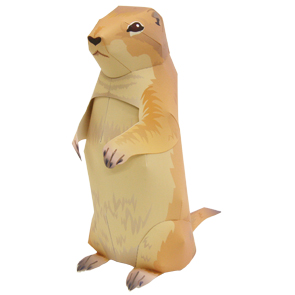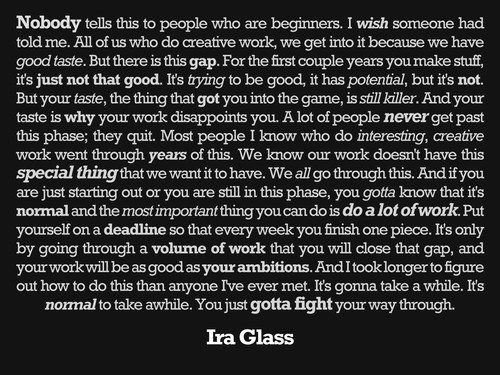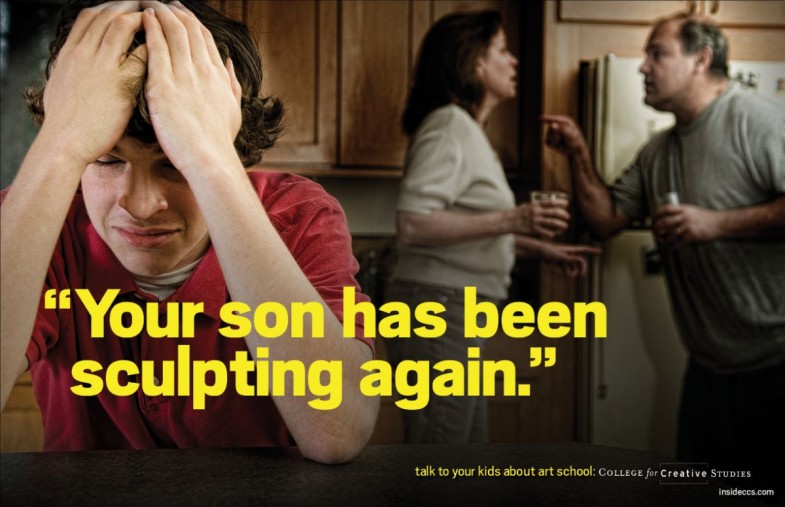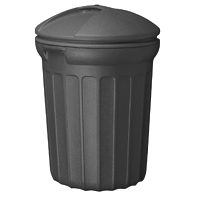This is amazing! It conveys the immensity of our universe–from the subatomic to the cosmic.
Author: Joe Meiser
paper craft website
We can learn a great deal about how to describe three-dimensional forms with planar materials by examining the methods of paper craft. Here’s a link to an awesome website with many animal templates:
holy cow! a flying robot!
I am for an art … by Claes Oldenburg
I am for an art that is political-erotical-mystical, that does something other than sit on its ass in a museum.
I am for an art that grows up not knowing it is art at all, an art given the chance of having a staring point of zero.
I am for an art that embroils itself with the everyday crap & still comes out on top.
I am for an art that imitates the human, that is comic, if necessary, or violent, or whatever is necessary.
I am for an art that takes its form from the lines of life itself, that twists and extends and accumulates and spits and drips, and is heavy and coarse and blunt and sweet and stupid as life itself.
I am for an artist who vanishes, turning up in a white cap painting signs or hallways.
I am for an art that comes out of a chimney like black hair and scatters in the sky.
I am for an art that spills out of an old man’s purse when he is bounced off a passing fender
I am for the art out of a doggy’s mouth, falling five stories from the roof.
I am for the art that a kid licks, after peeling away the wrapper.
I am for an art that joggles like everyones knees, when the bus traverses an excavation.
I am for art that is smoked, like a cigarette, smells, like a pair of shoes.
I am for art that flaps like a flag or helps blow noses, like a handkerchief.
I am for art that is put on and taken off, like pants, which develops holes, like socks, which is eaten, like a piece of pie, or abandoned with great contempt, like a piece of shit.
I am for art covered with bandages, I am for art that limps and rolls and runs and jumps. I am for art comes in a can or washes up on the shore.
I am for art that coils and grunts like a wrestler. I am for art that sheds hair.
I am for art you can sit on. I am for art you can pick your nose with or stub your toes on.
I am for art from a pocket, from deep channels of the ear, from the edge of a knife, from the corners of the mouth, stuck in the eye or worn on the wrist.
I am for art under the skirts, and the art of pinching cockroaches.
I am for the art of conversation between the sidewalk and a blind mans metal stick.
I am for the art that grows in a pot, that comes down out of the skies at night, like lightning, that hides in the clouds and growls. I am for art that is flipped on and off with a switch.
I am for art that unfolds like a map, that you can squeeze, like your sweetys arm, or kiss, like a pet dog. Which expands and squeaks, like an accordion, which you can spill your dinner on, like an old tablecloth.
I am for an art that you can hammer with, stitch with, sew with, paste with, file with.
I am for an art that tells you the time of day, or where such and such a street is.
I am for an art that helps old ladies across the street.
I am for the art of the washing machine. I am for the art of a government check. I am for the art of last wars raincoat.
I am for the art that comes up in fogs from sewer-holes in winter. I am for the art that splits when you step on a frozen puddle. I am for the worms art inside the apple. I am for the art of sweat that develops between crossed legs.
I am for the art of neck-hair and caked tea-cups, for the art between the tines of restaurant forks, for odor of boiling dishwater.
I am for the art of sailing on Sunday, and the art of red and white gasoline pumps.
I am for the art of bright blue factory columns and blinking biscuit signs.
I am for the art of cheap plaster and enamel. I am for the art of worn marble and smashed slate. I am for the art of rolling cobblestones and sliding sand. I am for the art of slag and black coal. I am for the art of dead birds.
I am for the art of scratchings in the asphalt, daubing at the walls. I am for the art of bending and kicking metal and breaking glass, and pulling at things to make them fall down.
I am for the art of punching and skinned knees and sat-on bananas. I am for the art of kids’ smells. I am for the art of mama-babble.
I am for the art of bar-babble, tooth-picking, beerdrinking, egg-salting, in-sulting. I am for the art of falling off a bartstool.
I am for the art of underwear and the art of taxicabs. I am for the art of ice-cream cones dropped on concrete. I am for the majestic art of dog-turds, rising like cathedrals.
I am for the blinking arts, lighting up the night. I am for art falling, splashing, wiggling, jumping, going on and off.
I am for the art of fat truck-tires and black eyes.
I am for Kool-art, 7-UP art, Pepsi-art, Sunshine art, 39 cents art, 15 cents art, Vatronol Art, Dro-bomb art, Vam art, Menthol art, L & M art Ex-lax art, Venida art, Heaven Hill art, Pamryl art, San-o-med art, Rx art, 9.99 art, Now art, New ar, How art, Fire sale art, Last Chance art, Only art, Diamond art, Tomorrow art, Franks art, Ducks art, Meat-o-rama art.
I am for the art of bread wet by rain. I am for the rat’s dance between floors. I am for the art of flies walking on a slick pear in the electric light. I am for the art of soggy onions and firm green shoots. I am for the art of clicking among the nuts when the roaches come and go. I am for the brown sad art of rotting apples.
I am for the art of meowls and clatter of cats and for the art of their dumb electric eyes.
I am for the white art of refigerators and their muscular openings and closing.
I am for the art of rust and mold. I am for the art of hearts, funeral hearts or sweetheart hearts, full of nougat. I am for the art of worn meathooks and singing barrels of red, white, blue and yellow meat.
I am for the art of things lost or thrown away, coming home from school. I am for the art of cock-and-ball trees and flying cows and the noise of rectangles and squares. I am for for the art of crayons and weak grey pencil-lead, and grainy wash and sticky oil paint, and the art of windshield wipers and the art of the finger on a cold window, on dusty steel or in the bubbles on the sides of a bathtub.
I am for the art of teddy-bears and guns and decapitated rabbits, explodes umbrellas, raped beds, chairs with their brown bones broken, burning trees, firecracker ends, chicken bones, pigeon bones, and boxes with men sleeping in them
I am for the art of slightly rotten funeral flowers, hung bloody rabbits and wrinkly yellow chickens, bass drums & tambourines, and plastic phonographs.
I am for the art of abandoned boxes, tied like pharohs. I am for an art of watertanks and speeding clouds and flapping shades
I am for U.S. Government Inspected Art, Grade A art, Regular Price art, Yellow Ripe art, Extra Fancy art, Ready-to-eat art, Best-for-less art, Ready-to-cook art, Fully cleaned art, Spend Less art, Eat Better art, Ham art, Pork art, chicken art, tomato art, bana art, apple art, turkey art, cake art, cookie art.
add:
I am for an art that is combed down, that is hung from each ear, that is laid on the lips and under the eyes, that is shaved from the legs, that is burshed on the teeth, that is fixed on the thighs, that is slipped on the foot.
square which becomes blobby
May 1961
Aaron Meyers artXpose #2 (example)
Example of how to submit artsXpose with the PHOTO option
For each artsXpose you complete, you may submit either a form OR a photo–it is not necessary to submit both. Included below is an example of how you may submit artsXpose using the PHOTO option. For the sake of efficiency, you may want to cut-and-paste the text below directly into your post and then appropriately revise the information.
Your photograph should depict you at the event with some distinctive features. This will make it obvious that you attended.
– – –
Title of Event: Joe Meiser Artist Lecture
Date & Time of Event: Friday February 3rd 7 pm
Location of Event: Samek Art Gallery
Type of event: Artist lecture and reception
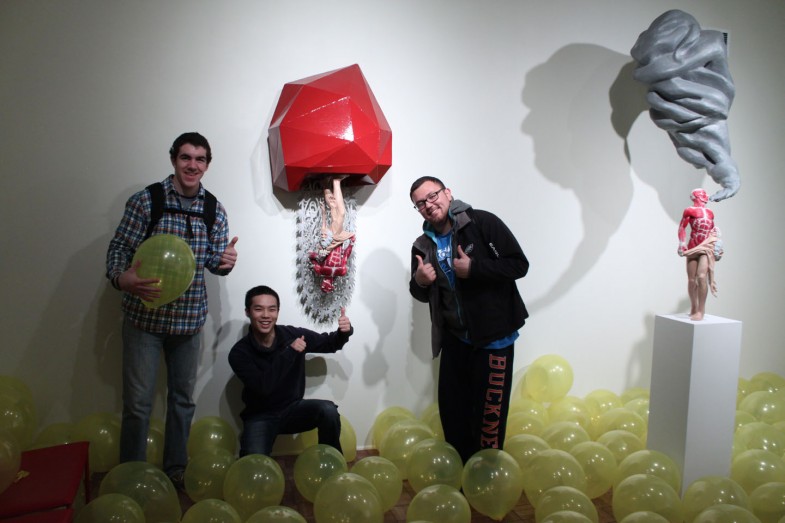
Aaron Meyers ArtsXpose #1 (example)
For each artsXpose you complete, you may submit either a form OR a photo–it is not necessary to submit both. Included below is an example of how you may submit artsXpose using the FORM option. For the sake of efficiency, you may want to cut-and-paste the text below directly into your post and then appropriately revise the information.
– – –
Title of Event: Bill T. Jones Lecture
Date and time of event: Monday January 30th 7:30 pm
Location of Event: Harvey Powers Theater
Type of Event: Guest Artist Lecture
1.) Provide a brief detail-oriented technical description or summary of the event you attended. (This section should remain journalistic and should not be reflective of your opinion.)
Bill T. Jones gave an hour long lecture with almost a full half hour of questioning afterward. During the lecture he spoke from memory and showed a 15 minutes video of one of his dances that was performed by a number of different dancers. He also showed brief examples of his style of movement throughout the lecture.
2.) Use the section below to write a well-structured paragraph focusing on your personal criticalinsight / response to the event. How did you interpret or react to what was presented to you?
It was clear that Jones was a stage performer. Even in a lecture he had an amazing presence and was very confident. I enjoyed seeing him show bits of his dance moves. He also told a lot of very interesting stories about both his dad and his long time partner. One thing that I found interesting was at the beginning of the lecture he talked a lot about being a part of a counter culture and pushing against society. He described how fruitful it was for him to live in an artist colony that had no concern for material success. However at the end of the lecture he was described some of his current financial realities and the trouble of maintaining a dance company.
3.) What information, ideas, images, etc. most impressed you and why?
I was most impressed by his presence, story telling, and his brief dance moves. They were all very clear but also very unique.
4.) Overall, how would you rate this event (10 being the most worthwhile)?
(10 / 9 / 8 / 7 / 6 / 5 / 4 / 3 / 2 / 1 )
eight
5.) Justify your rating in the question above:
I think for he was a really articulate speaker and was also entertaining. He also shared some messages that I thought were very memorable, like when he talked about not keeping your judging mind from getting in the way.
New York City Bus Trip!!! – Saturday, March 3, 2012
The Department of Art & Art History is taking a bus trip to New York City and students are strongly encouraged to attend this trip as it will be a great opportunity to observe cutting edge contemporary artwork. Attending this trip will count as two artsXpose assignments, and students in attendance will not be required to submit any documentation. Talk with Joe if you’d like to attend.
$30 BU ID, cash or check payable to Bucknell University
- The bus leaves Bucknell at 7:00 a.m. – 7th Street Parking Lot (Across from Smith Hall).
- One-way trips are not encouraged, but if you are NOT planning to return on the bus please notify the Art History faculty in charge before getting off the bus in New York City.
- The bus will drop passengers off at the Metropolitan Museum, 5th Avenue at 82nd Street. Upon arrival at Metropolitan Museum, enter the ground level 81st Street entrance. Use their coat check and ticket desk to avoid the crowds at main entrance. No suitcases are allowed in the museum.
- The second bus stop is the Chelsea Art Gallery at 9th Avenue and 24th Street.
- The bus will depart from New York City at 7:00 p.m. at 6th Avenue between 54th and 55th Streets – east side of the street (one block north of Hilton Hotel). Passengers should plan on arriving at the re-boarding location at least 15 minutes early
- Bucknell University and the Department of Art and Art History are not responsible for passengers left in the city. If a passenger misses the bus because s/he was not on time for the departure or at the wrong pick-up location, s/he is responsible for finding alternative means of transportation to Bucknell.
- If you miss the bus for departure, contact the Bucknell Switchboard at 570-577-2000 to let them know how you plan on getting back to Lewisburg.
- No refunds will be given after noon on Monday, February 27, 2012.
NOTE: Alcohol and tobacco product use is prohibited on the bus.
Bus Company Name: Susquehanna Trailways___Bus No.____________
Phone number 800-692-6314 from 6:00 AM – 4:00 PM
Ira Glass – Getting Started
HOW TO WRITE GOOD
Caveat emptor.
Carpe diem.
O si villi, si ergo, fortibus es in ero.
Et tu, brute.
by Frank L. Visco
My several years in the word game have learnt me several rules:
- Avoid alliteration. Always.
- Prepositions are not words to end sentences with.
- Avoid cliches like the plague. (They’re old hat.)
- Employ the vernacular.
- Eschew ampersands & abbreviations, etc.
- Parenthetical remarks (however relevant) are unnecessary.
- It is wrong to ever split an infinitive.
- Contractions aren’t necessary.
- Foreign words and phrases are not apropos.
- One should never generalize.
- Eliminate quotations. As Ralph Waldo Emerson once said: “I hate quotations. Tell me what you know.”
- Comparisons are as bad as cliches.
- Don’t be redundant; don’t use more words than necessary; it’s highly superfluous.
- Profanity sucks.
- Be more or less specific.
- Understatement is always best.
- Exaggeration is a billion times worse than understatement.
- One-word sentences? Eliminate.
- Analogies in writing are like feathers on a snake.
- The passive voice is to be avoided.
- Go around the barn at high noon to avoid colloquialisms.
- Even if a mixed metaphor sings, it should be derailed.
- Who needs rhetorical questions?
(Student Name), Bondi Beach
This is an example of a well written Art Report from a previous semester. Keep in mind that this student was following a slightly different set of instructions–your response will only be about half as long as this example. Click here to view the Art Report guidelines.
Immediate Response
After finding the piece Bondi Beach by Gregor Schneider in the book Art Now on page 424, I was initially reminded of a large dog pound on an otherwise pleasant beach. I became focused on the limited space provided for the individuals inside and immediately was struck by a sense of claustrophobia along with a confusion as to why people would chose to enter the cages. I found it humorous that inside the extremely small spaces were efforts to instill comfort such as an umbrella, air mattress, and trash bag for convenience. The cages are an eye-sore at a beautiful beach, and an inconvenience for those wishing to relax in a calm area; however, people on the sand do not seem to be daunted by the cages. The people inside are content with their position, and those strolling the beach outside the fences do not even look over at the piece. Schneider’s work is a study of human behavior as well as an aesthetically engaging piece.
Objective Description
Gregor Schneider’s Bondi Beach consists of a free-standing connection of metal cages located on a populated public beach. The walls of the cages are twice the height of the average person and are of the standard design used in chain-link fences that are usually used in humane societies. The chain-linked fence allows for those inside to see the ocean as well as those outside to look in on those inside the cages. There are twenty-one cells, each of small dimensions, conveniently equipped with a beach umbrella, air mattress, and trash bag. The installation of these items give those inside a reason to be fully content with their choice of captivation. The number of people inside each cage varies. Some cages are empty, some have one person, and some are overcrowded; however, no one has made the decision to move to the empty cages. Also, there are numerous people freely wandering along the beach outside of the cage.
Technical Decisions
Schneider chose to construct his piece out of common materials which helps to depict a sense of “normality” in his work. Instead of constructing an abstract work, he constructed a common object (a cage) and placed it in an odd environment and altered its purpose. Instead of the cages being located at a local humane society, a knowingly unpleasant area, Schneider placed them at a typically beautiful, free location. Also, he replaced the animals expected to be inside with humans. What is unique about Bondi Beach is that the viewer becomes apart of the work. Whether he or she chooses to enter the cage or remain outside does not matter, either choice the individual makes adds to his piece. The fences are not all that is important, the items inside and the colors selected hold great value as well. The white umbrella attempts to add a mirage of tranquility as the blue air mattress mimics the color of the ocean directly outside of the cage to forge a connection with nature.
The Work in the World
As mentioned earlier, Bondi Beach is a direct reminder of dog cages at humane societies. They work as a confinement for seemingly “useless” things which add nothing substantial to society. Abandoned dogs that are typically in these types of cages are seen as a nuisance until a human, a species of higher rank, selects the dog to aid his or her life through companionship or more simply: entertainment. Schneider’s piece is also a distinct reminder of prisons or jail cells. However, this work deviates from a jail or prison cell in the sense that people willingly enter these cages. At a quick glance, these cages can remind one of internment camps as well; however, this connection fails for the same reason the jail and prison cell connection fails. These people contained in the cages are not confined, they are not restricted, they freely choose to give up their freedom and abandon their ability to wander for the comfort of modern day items.
The Story it Tells
Schneider’s message behind the work is clear: humans have become enslaved by their own creations. He constructed the piece out of previously man-made objects (the fence, umbrella, air mattress, and trash bag.) The man-made fence works as a barrier, the man-made umbrella serves as unnecessary protection, the man-made air mattress becomes luxurious comfort, and the man-made trash bag holds waste from manufactured items. Each of these things symbolizes the ways in which society has over-developed. We produce more than we need, which in turn destroys our natural instincts of survival. We rely on our inventions, even if they rob us of natural beauty, for example the construction of cities and elimination of forests. Even though we may realize we are walking into our own trap, such as the people entering the cages, we cannot deny the comfort that is granted inside.
A primer on 3-D printing
“What They Left Behind” previous student projects
“Your son has been sculpting again”
Negative Space Sculptures – First Day of Class
The world is composed of positives forms and negative spaces. Usually negative spaces are empty, but in this assignment students created positive forms of negative spaces. Students worked together, holding wet plaster between their bodies until the plaster solidified.
Everyday Object Assignment Instructions
Objects are meaningful. If one examines an object in a detective-like fashion, one can identify clues which say something about the values, methods, and objectives of the culture which created it. Remember the example that was given in class, and how the plastic trash can speaks volumes about our contemporary society’s consumerist tendencies, our reliance on oil, and our relationship with the environment—the trash can has meaning, it is connected with a larger system, and it evidences the values and methods of our culture.
Your assignment is to choose an everyday object from your surroundings and reflect deeply about its function, its relevance, its meaning within our culture. Be prepared to present your object and discuss its significance in class.
Here are instructions for adding your everyday object post to this website:
- Create a new post by clicking up above on the “+ New” button.
- Once the post screen comes up, check the “Everyday Object Discussion” box to the right to put the post in the right category
- Upload a photo of the object you’ve chosen by clicking on the upload/insert button above the text field (remember to click the “insert into post” button while you’re on the upload screen)
- Write a few sentences describing the meaning that you see in the object you’ve chosen.
- Be prepared to present your object and discuss its significance in class.
3-D Ceramic Printing
http://www.youtube.com/watch?v=WmVLQHAH-V4&feature=player_embedded#!
Art21 Website
Art21 has a great website on contemporary art. The videos are well produced and the artists interviews are fascinating. Enjoy!
Click here to visit the Art21 website: http://www.pbs.org/art21/
Cattelan at the Guggenheim
With not a single piece of art on the walls, the Guggenheim Museum is celebrating Maurizio Cattelan’s career by hanging all his works in the middle of its central space. Serena Altschul got a personal tour from Cattelan who shared insight into what makes this perennial trickster such a popular artist.
CBS Morning just did a good story on this show: http://www.cbsnews.com/video/watch/?id=7394322n

